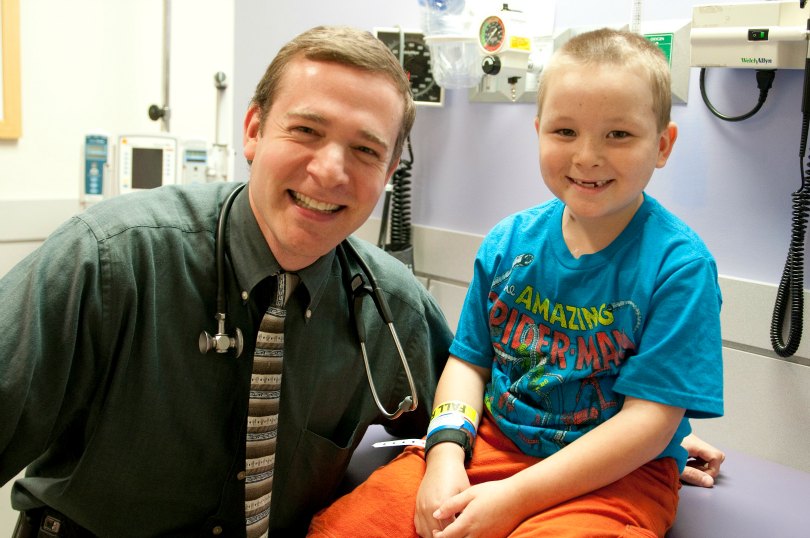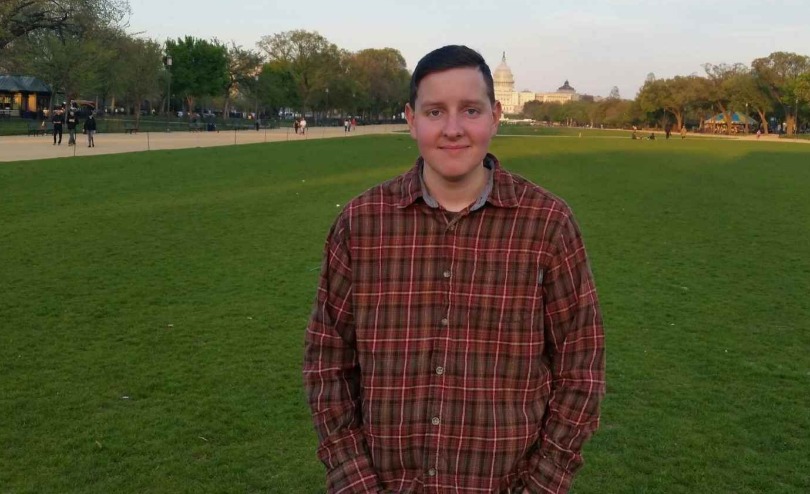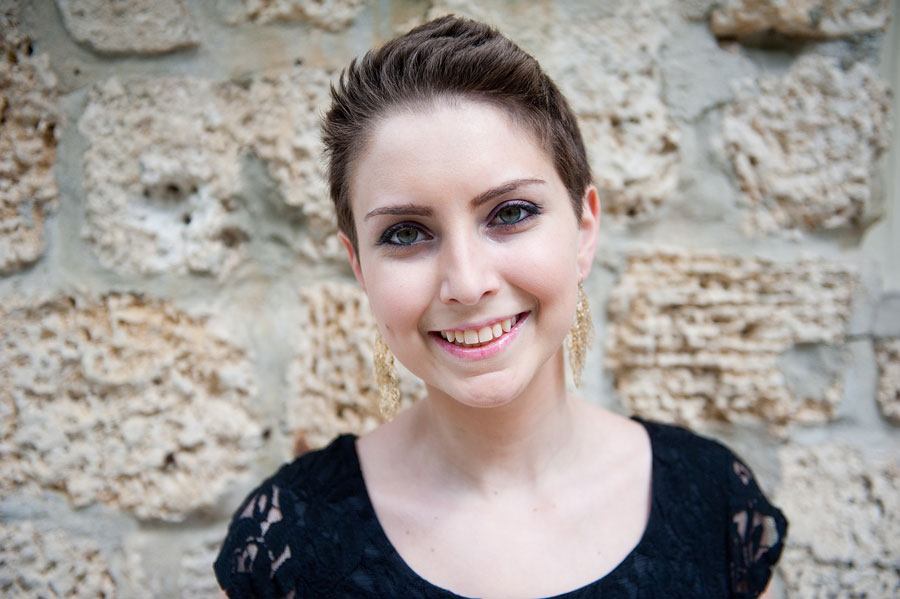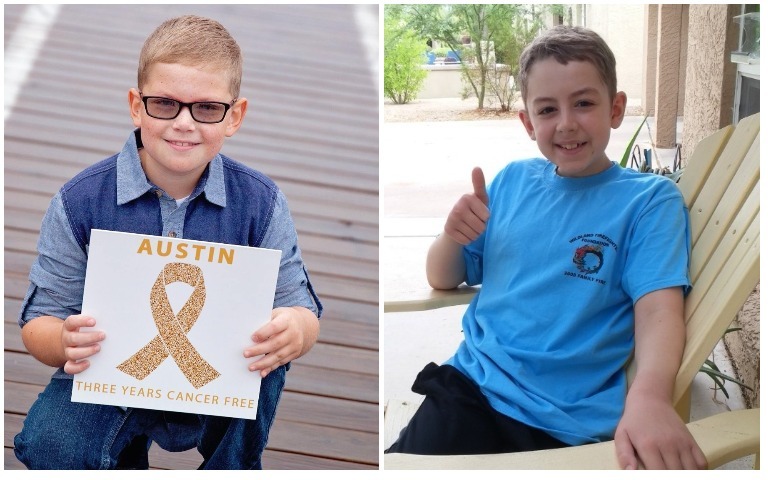How Your Donations Helped Zach Beat Childhood Cancer
Most six-year-old boys spend their time thinking about toys, candy and getting to school on time. Few need to worry about their health at such a young age, and even fewer face the uncertain future following a cancer diagnosis.
Fighting cancer was Zach’s world when he was six. In 2007, he was diagnosed with acute lymphoblastic leukemia, or ALL. Over the next four years, Zach underwent intense and physically demanding treatments like chemotherapy and radiation.

Childhood Cancer Research You Helped Fund in 2018
With the holiday season upon us and another year drawing to a close, it’s a great time to reflect on some of the major research accomplishments of doctors and scientists whose work on childhood cancers benefited from the support of St. Baldrick’s donors like you.
There’s much to be thankful for. All things considered, 2018 was a remarkably successful year for childhood cancer research, with much of that success spurred on by grants funded by St. Baldrick’s. Of course, none of this would have been possible without our generous donors.

Dr. Kohanbash’s cutting-edge research on ependymomas is supported by a Hero Fund in memory of Henry Cermak, who passed away in 2008 after a long, 2-year fight that included many surgeries, chemo regimens, and 93 rounds of radiation.
St. Baldrick’s 2018 Holiday Gift Guide: Gifts That Give Kids Hope!
The holiday season is about giving – and what better gift for your loved ones than something that helps a great cause, like taking childhood back from cancer. Not only are the items below awesome gift ideas, but a portion of each sale goes to the St. Baldrick’s Foundation.
That means every item sold helps fund lifesaving research and clinical trials that can find new and better treatments for kids with cancer.
Saving Money on Black Friday? Pass it on this Giving Tuesday.
Last year, an estimated 174 million Americans – or more than half the total US population – shopped online or in stores between Thanksgiving and Cyber Monday. In only 5 days, online sales totaled nearly $15 billion. It’s safe to say, then, that many Americans saved money pursuing big bargains that weekend.
If you’re saving money during this year’s Black Friday or Cyber Monday events, consider passing it on this Giving Tuesday, Nov. 27. You can do that right now by visiting our dedicated Giving Tuesday donation page.

How a Pediatric Oncologist and 10-Time Shavee Is Fighting Childhood Cancers
Pediatric oncologist Dr. Tom McLean of Wake Forest Baptist Health has been awarded one of 29 new 2018 Infrastructure Grants from the St. Baldrick’s Foundation.
For more than a decade, Dr. McLean has been participating in head-shaving events with the St. Baldrick’s Foundation. That’s right – not only does Dr. McLean help fight cancer at Wake Forest Baptist Health in Winston-Salem, N.C., he’s also one of many researchers who help raise money for childhood cancer research by having his own head shaved clean.
It’s a fact the friendly doctor laughs off by pointing out he doesn’t have a lot of hair to shave away in the first place.
“The first time I shaved my head, I was nervous,” Dr. McLean joked. “But then I did it, and I quickly realized, you know, it’s not that big of a deal – my hair is pretty short anyways.”

Dr. Tom McLean, winner of a 2018 Infrastructure Grant, has shaved his head for St. Baldrick’s 10 times.
When Research Offers Hope, Parents Continue to Advance the Mission
*Formerly known as the St. Baldrick’s – Stand Up to Cancer Pediatric Cancer Dream Team, this team is now the St. Baldrick’s EPICC Team (Empowering Pediatric Immunotherapies for Childhood Cancer).
I was recently invited to serve as a patient family advocate for the St. Baldrick’s / Stand Up to Cancer Pediatric Cancer Dream Team representing the National Cancer Institute. If you’re not familiar with the Dream Team and what they’re doing, it’s worth taking a few minutes to read up on the project.
In short, it’s a multi-institutional effort to accelerate cures for childhood cancer by sharing the skill, knowledge and unique resources of 8 top-notch research institutions.

Carlos Sandi with his son, Honored Kid and Ambassador Phineas.
Researcher Targets Childhood Cancer With a Virus
Just mentioning herpes might make some people a little nervous, but in this story, herpes is the good guy. Read on for more about St. Baldrick’s Scholar Dr. Gregory Friedman’s work on a genetically altered version of the virus that could be the next targeted therapy for kids with brain tumors.
BREAKING NEWS: An innovative therapeutic tool developed by Dr. Friedman has proven to be safe in kids with high-grade gliomas, according to recently released clinical trial findings. Crafted from the herpes virus that causes cold sores, the genetically modified virus has already shown promise in killing cancer cells and stimulating the immune system to attack the brain tumor – with one patient still showing progress more than a year after treatment! In the next phase of research, Dr. Friedman will study how safe the viral tool is when combined with one low dose of radiation, which is expected to boost the immune system and help the virus replicate.

Dr. Friedman smiles with a young patient in an exam room at Children’s of Alabama.
St. Baldrick’s Scholar Dr. Gregory Friedman discovered that the herpes simplex virus, with a few modifications, will kill pediatric brain cancer cells — without causing cold sores.
Teen Saved by Science Speaks Up for Kids’ Cancer Research
Back in April, Ambassador Zach was finally healthy enough after his bone marrow transplant to go out in public. What did he decide to do after that momentous milestone? He joined the hundreds of advocates speaking up for kids’ cancer research on Capitol Hill during Childhood Cancer Action Days. Here’s his recap of that trip and the big moments that have come since …

Ambassador Zach poses for a photo in front of the United States Capitol building and its famous dome during Childhood Cancer Action Days in April.
I received a bone marrow transplant over a year ago, and I was so glad that I was healthy enough to speak on Capitol Hill this past April as a St. Baldrick’s ambassador. As an ambassador, I am a face and a voice for childhood cancer, and while in Washington, D.C., my family and I represented thousands of children and families who are affected by childhood cancer. I was lucky enough to share my story and talk about the importance of funding childhood cancer research through the STAR (the Survivorship, Treatment, Access and Research) Act, the most comprehensive childhood cancer legislation ever taken up by Congress. With the recent passage of the STAR Act, we have come so far, but we still have so far to go.
This Is What Childhood Cancer Survivorship Looks Like
Today is the first day of National Cancer Survivors Month. To kick it off, 2014 Ambassador Lauren shares what survivorship means to her and gives us a peek into what life is like as a childhood cancer survivor.

Diagnosed at age 14 while still in high school, Lauren is now 20 years old and is pursuing her dream of becoming a pediatric oncologist, so she can devote her career to both to the treatment of kids with cancer and to the research to find cures.
June 7th, 2012 is a day that will forever be etched into my memory. This was the last day of my freshman year of high school, but also the day my life was forever changed. After eating dinner, my mother began shaking in her seat as my stepfather informed me that the tumor that had been removed from my abdomen was malignant and so were the surrounding lymph nodes. I had stage 4 neuroblastoma.
Kymriah’s Journey From Lab to Lifesaver: FDA Approval and Beyond [Part Four]
From its inaugural Phase 1 clinical trial through its successful Phase 2 trial, we have traced the path of Kymriah, a recent immunotherapy and gene therapy breakthrough for kids with high-risk leukemia and few options, like Honored Kids Austin and Ori. (Read the whole series here.) Now, with a historic decision made in August, we are at the end of our story, but not at the end of the story of Kymriah. Instead, Kymriah’s is just beginning – and starting a new chapter of hope for kids with cancer.

Austin (left) and Ori (right) are both alive today thanks to Kymriah and their participation in the Phase 1 and Phase 2 trials.
On August 30, 2017, big news rippled through the childhood cancer community. On that late summer day – before the start of Childhood Cancer Awareness Month – the FDA made a historic move that changed the landscape of childhood cancer research forever.
« Newer PostsOlder Posts »

 SBF
Tweets »
SBF
Tweets »